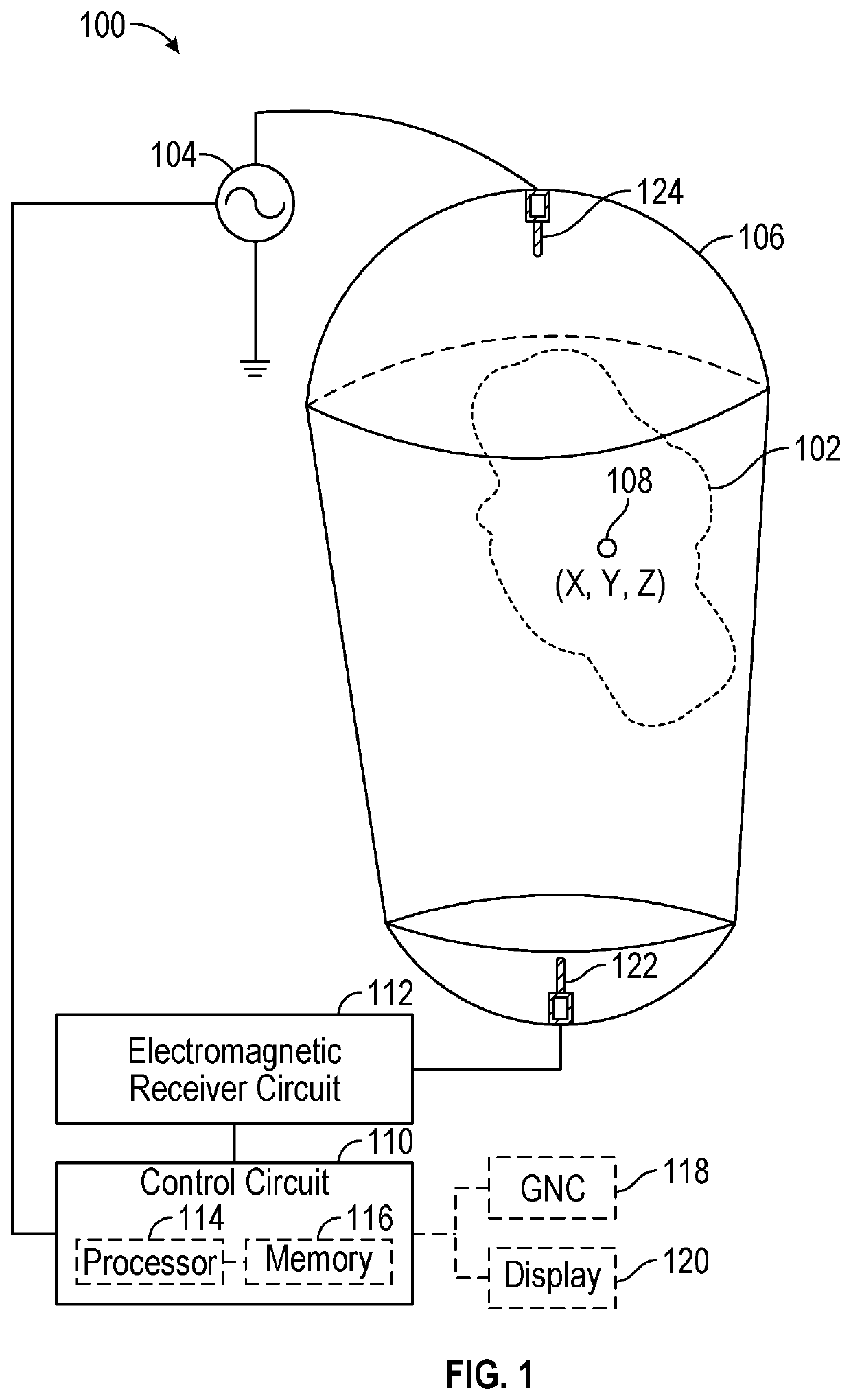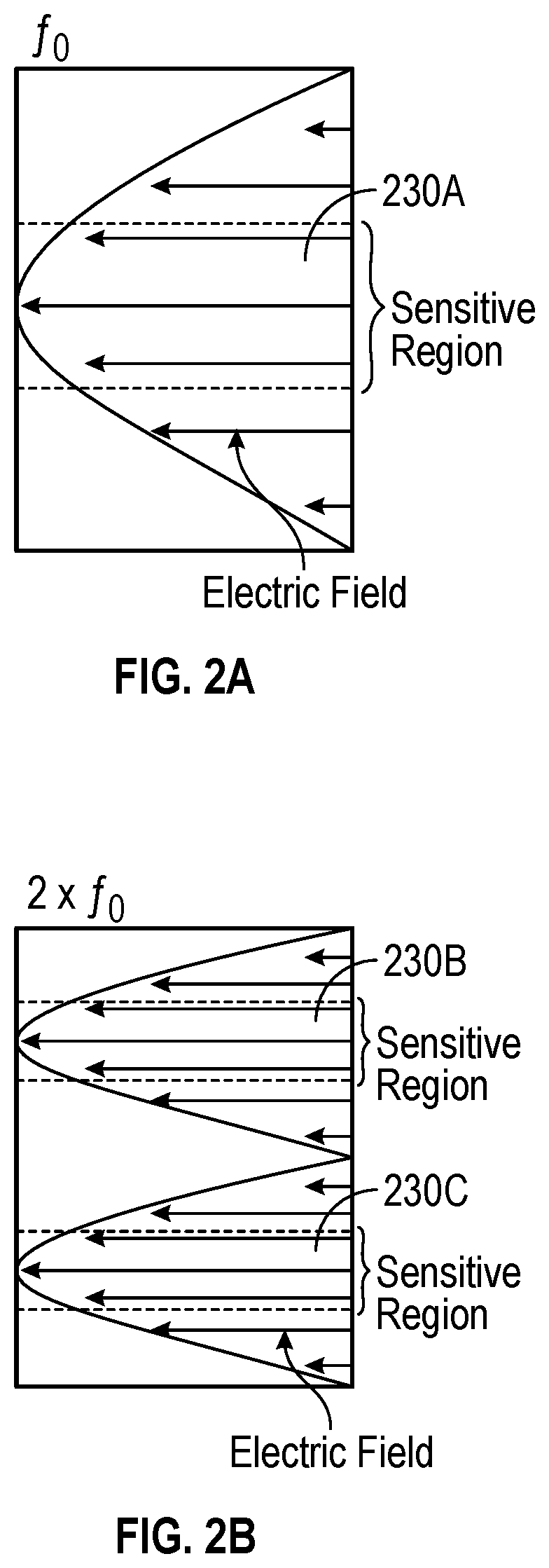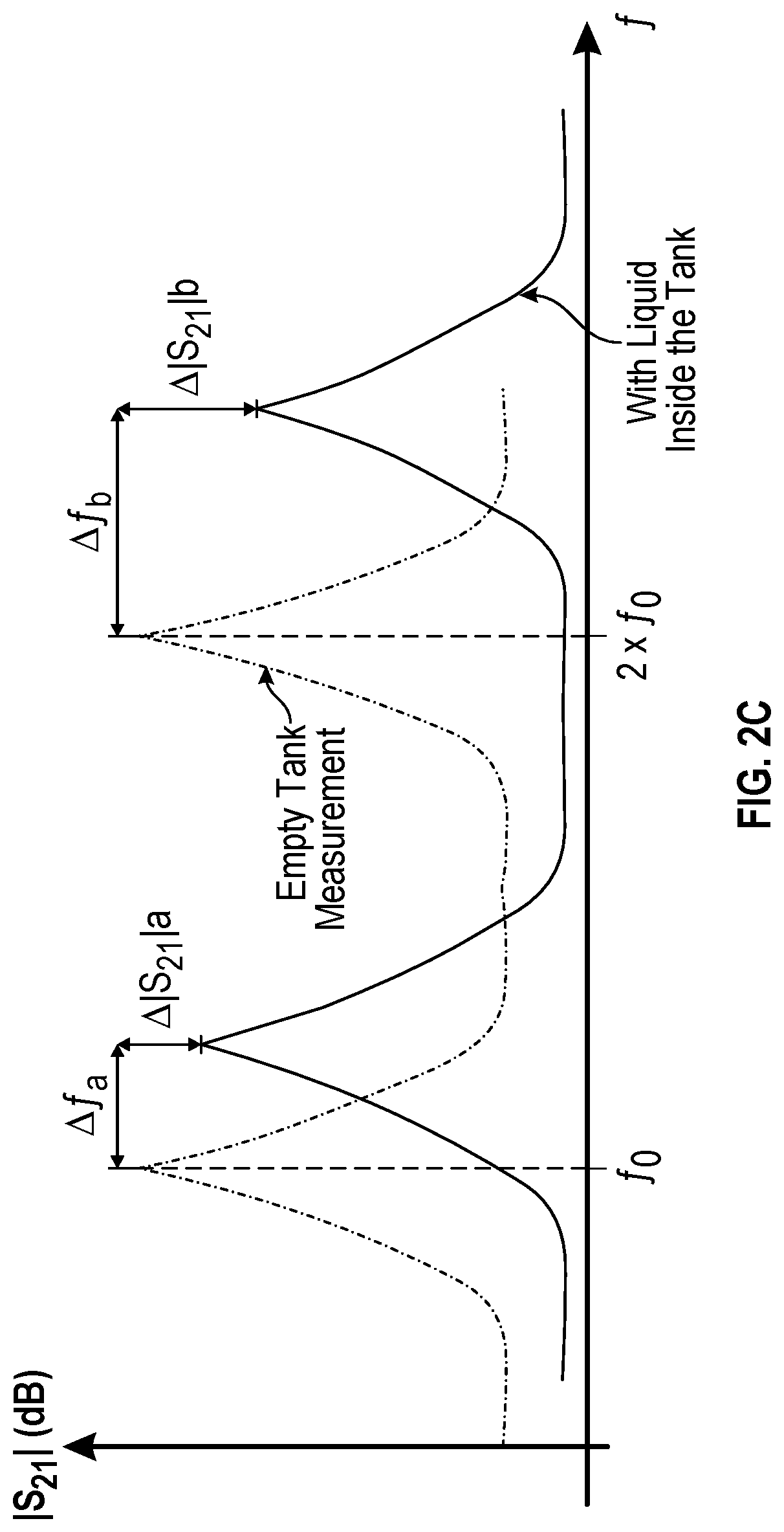Electromagnetic slosh and liquid position detection
a technology of slosh and detection, applied in the field of slosh detection and liquid position monitoring, can solve the problems of large weight penalty, inability to fully eliminate slosh force, and baffles add design and construction complexity to the tank as well as weight, so as to reduce the uncertainty of slosh force, reduce the size or weight of passive features, and improve the effect of accuracy
- Summary
- Abstract
- Description
- Claims
- Application Information
AI Technical Summary
Benefits of technology
Problems solved by technology
Method used
Image
Examples
Embodiment Construction
[0022]A physical characteristic such as a spatial configuration (e.g., quantity or position) of a liquid within a tank can be determined using an electromagnetic sensing approach. For example, by treating the tank as a resonating cavity, movement of the fuel inside will produce one or more of a shift in resonant frequencies (e.g., in electromagnetic resonances) or a change in quality factor (e.g., a change in damping behavior), as illustrative examples. Such effects result from differing dielectric properties air, gas, or vacuum, compared to the liquid in the tank (e.g., a liquid comprising a propellant constituent such as an oxidizer or a fuel). As shown generally below, a sphere of a dielectric medium such as distilled water can be moved linearly across a resonating cavity, and observed scattering parameters (e.g., a transmission scattering parameter, S21) also changes. Accordingly, use of a frequency domain technique can be used to determine a characteristic of a spatial configur...
PUM
 Login to View More
Login to View More Abstract
Description
Claims
Application Information
 Login to View More
Login to View More - R&D
- Intellectual Property
- Life Sciences
- Materials
- Tech Scout
- Unparalleled Data Quality
- Higher Quality Content
- 60% Fewer Hallucinations
Browse by: Latest US Patents, China's latest patents, Technical Efficacy Thesaurus, Application Domain, Technology Topic, Popular Technical Reports.
© 2025 PatSnap. All rights reserved.Legal|Privacy policy|Modern Slavery Act Transparency Statement|Sitemap|About US| Contact US: help@patsnap.com



